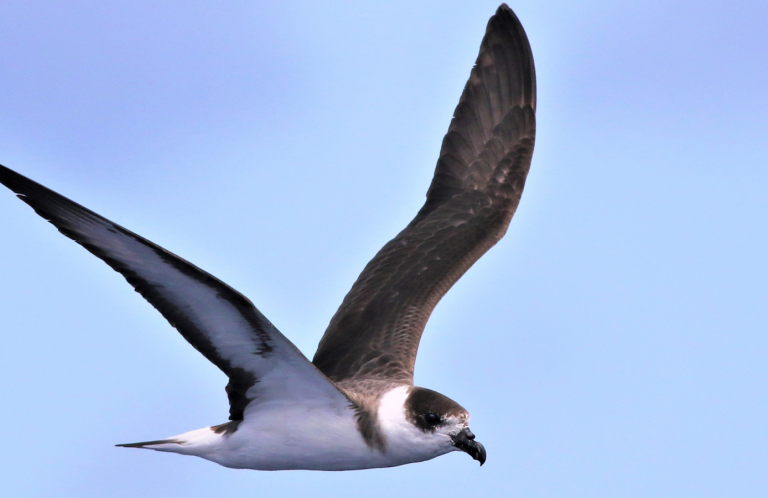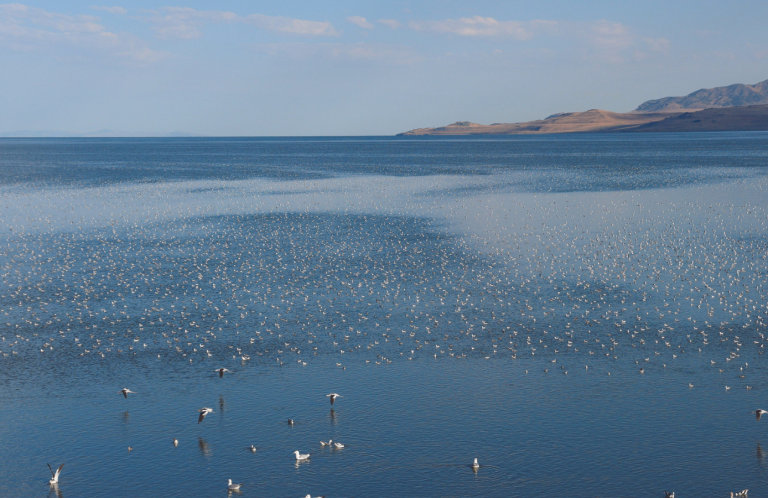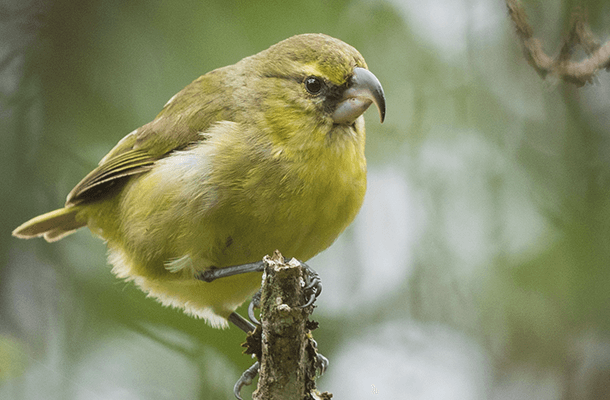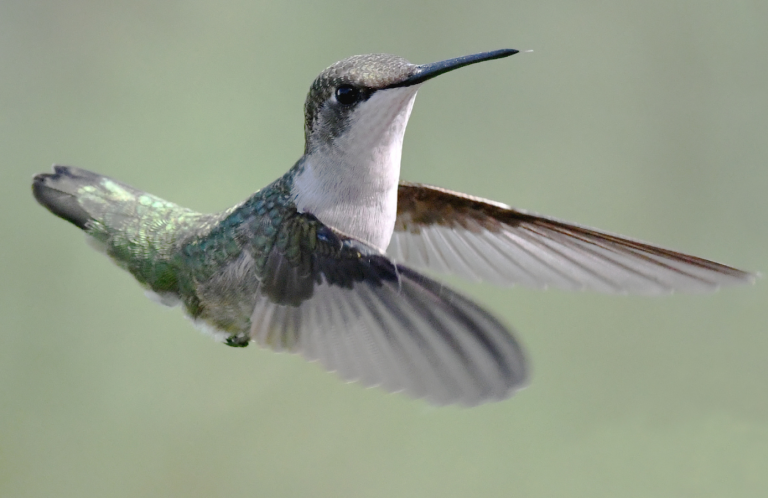A Helicopter Trip to Safety for Rare Hawaiian Petrel Chicks
A historic project more than 30 years in the making took place Monday on the Hawaiian island of Kauaʻi, when scientists translocated 10 downy, endangered Hawaiian Petrel chicks by helicopter from their mountain colonies to a new, protected colony within Kilauea Point National Wildlife Refuge.
Endangered Hawaiian Petrels, or ʻUaʻu, live only in the Hawaiian Islands. They have declined dramatically due to a number of threats, including predation by introduced cats, rats, and pigs, and collisions with manmade structures during nocturnal flights from their breeding colonies in the mountains to the ocean, where they search for food.

Endangered Hawaiian Petrels, known as ʻUaʻu, are one of two seabird species endemic to the Hawaiian Islands and live nowhere else on Earth. Photo by Brenda Zaun
"Predator-proof fencing and translocations of this type are necessary conservation strategies in Hawai'i to deal with widespread non-native predator populations that we can't readily eradicate," said George Wallace, Vice President of ABC, who took part in the translocation.
"For the Hawaiian Petrel, which is threatened by non-native predators in their montane nesting areas, creation of a colony protected from predators will be a major step forward in stabilizing and recovering its Kauaʻi population,” he said.

The slope in Kauai where the Hawaiian Petrel chicks originally nested. Photo: André Raine/Kaua'i Endangered Seabird Recovery Project
The effort was led on the ground by Kaua‘i Endangered Seabird Recovery Project, a Hawai‘i Department of Land and Natural Resources' Division of Forestry and Wildlife (DOFAW) project administered by Pacific Cooperative Studies Unit, University of Hawaii; Pacific Rim Conservation; the U.S. Fish and Wildlife Service, Kilauea Point National Wildlife Refuge; and ABC. Kaua‘i Island Utility Cooperative and DOFAW supported predator control within Hono O Na Pali Natural Area Reserve. The National Tropical Botanical Garden provided important assistance with vegetation restoration at the translocation site. The National Fish and Wildlife Foundation provided critical funding support.
"We are thrilled to be translocating Hawaiian Petrels to be completing not only a major recovery action for this species, but restoring a missing component of Kauai's coastal ecosystem where these birds once nested," said Lindsay Young, executive director of Pacific Rim Conservation. "The predator-proof fence will not only protect these new fledglings, but will also serve as a safe haven for native plants and other sensitive species to allow the whole ecosystem thrive."
Precious Cargo
Kauaʻi's rugged mountain interior was the backdrop for the first phase of the carefully orchestrated translocation. Helicopters dropped two teams of wildlife biologists onto mountain peaks in the Hono o Na Pali Natural Area Reserve in the early morning, who then hiked down to 10 nest burrows they had monitored throughout the breeding season.
The biologists carefully removed the large, healthy chicks by hand from their burrows, placed the young birds into pet carriers, and climbed back to the mountain peaks where the helicopters picked them up. Once inside the helicopter, the collection teams secured the chicks' holding boxes with seat belts to ensure the safety of the precious cargo.

Hawaiian Petrel chicks being transported to the helicopter. Photo: Lindsay Young/Pacific Rim Conservation
From the mountains, the helicopters flew the chicks to Princeville Airport, not far from Kilauea Point, where the animal care team on the ground assessed their health. From there, they were driven to the Refuge and their new home within the recently completed predator-proof fence in the Nihoku area of the Refuge
Surrounded by fine mesh stainless steel fencing that is more than six feet tall, the nearly 8-acre enclosure at Nihoku protects the seabirds from predators. The enclosure has recently been partially restored with native vegetation, and includes nest boxes that are specifically designed to mimic the seabirds' natural burrows.

Until they fledge, the translocated chicks will live within a predator-proof enclosure at Kīlauea Point National Wildlife Refuge. Photo: Jessica Behnke
Hope for Hawaiian Seabirds
Hawaiian Petrel chicks imprint on their birth colony the first time they emerge from their burrows and see the night sky. As adults, they return to breed at the same colony. Since chicks were removed from their original burrows before this critical imprinting stage, they will emerge and imprint on their new home on Nihoku and return to that site as adults.
In the meantime, human caretakers will hand-feed the young birds a slurry of fish and squid and carefully monitor their growth until they leave their new nest burrows and fly out to sea. The petrels will remain at sea for the next three to five years before returning to Nihoku as adults. The new colony will be the only fully protected colony of federally listed seabirds anywhere in the Hawaiian Islands and will represents a huge achievement in recovering this species.

Hawaiian Petrel chick at its mountain burrow prior to the translocation. André Raine/Kaua'i Endangered Seabird Recovery Project
“The creation of the new colony will help prevent the extirpation of the species from Kauai,” said Michael Mitchell, the U.S. Fish and Wildlife Service Acting Kauaʻi National Wildlife Refuge Complex Project Leader.
“Petrels, like many other native Hawaiian species, are facing tremendous challenges with shrinking habitat and the onslaught of invasive species,” Mitchell said. “Translocating the birds to Kilauea Point National Wildlife Refuge ensures that this colony of birds will be protected for our children and our children's children.”

An important next step in the project will be the translocation of Newell's Shearwater (pictured) in 2016. Photo by Jack Jeffery
An important next step in the project will be translocations of Newell's Shearwater in 2016. The seabird's population on Kauaʻi has dropped by an estimated 75 percent in the last 15 years, said André Raine of KESRP. “The establishment of new colonies of that species using predator-proof enclosures at Nihoku, and possibly other locations in the future, is an important management tool to help reverse this decline.”


















































